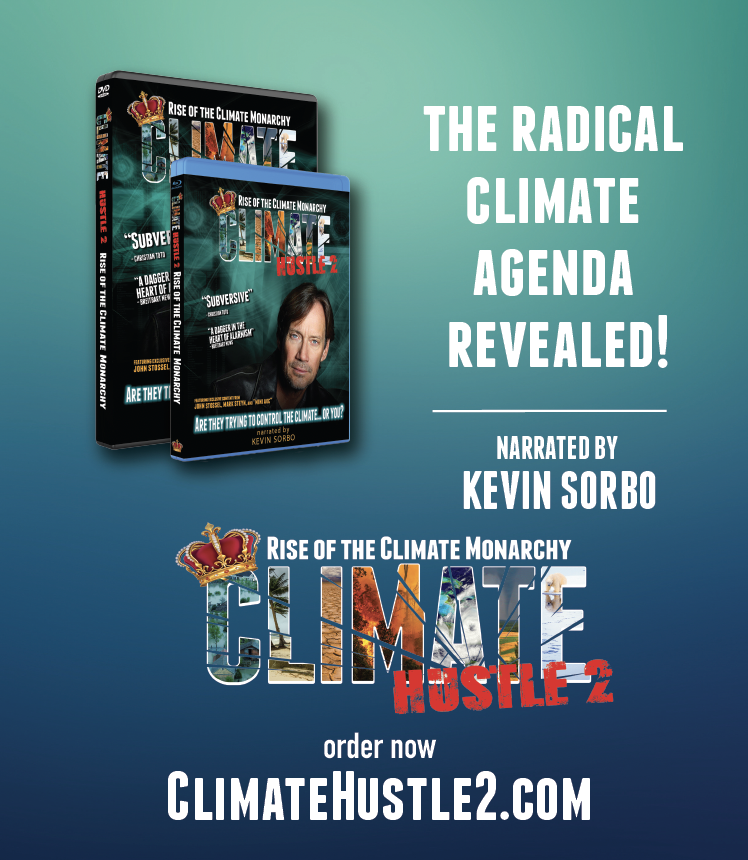https://www.newsmax.com/finance/streettalk/endangerment-climate-legislation/2025/04/17/id/1207280/
By Craig Rucker
One of the Trump administration’s most important executive actions is the Environmental Protection Agency’s review of the Obama EPA’s determination that carbon dioxide (CO2) endangers our health.
The Obama and Biden Administrations both used the 2009 “Endangerment Finding” (EF) to justify regulating or even banning virtually anything that emits carbon dioxide: coal and gas electricity generation, gasoline and diesel vehicles, gas furnaces, water heaters, stoves and ovens, and ultimately our living standards.
How could that happen in the Land of the Free, the home of science, democracy and industry?
George Orwell might say the problem began with the 1984 US Supreme Court decision in Chevron v. Natural Resources Defense Council. That ruling established “Chevron deference,” requiring that courts defer to “reasonable” government agency interpretations of ambiguous laws and statutory language.
Ambiguous laws and ambitious agencies are a dangerous combination.
EPA, for example, often collaborated with activist groups (and states) to turn accidentally or purposefully vague legislative language into powerful regulations with enormous national costs and impacts.
The Supreme Court’s 2007 Massachusetts v. EPA ruling magnified those dangers. It held that EPA could regulate CO2 if the agency found it “causes or contributes” to “air pollution” that may be “reasonably anticipated” to “endanger public health or welfare.”
The Obama EPA jumped at the opportunity. It needed less than a year to perform a dubious analysis and issue the December 2009 Endangerment Finding – enabling the agency to control America’s electricity generation, transportation, factories, agriculture and households.
It was the pinnacle of government control. Never before had so few bureaucrats exerted so much power over so many lives, with so little oversight by the Legislative or Judicial Branch.
However, this expanding Executive Branch overreach eventually persuaded the Supreme Court to reexamine its earlier rulings.
The Court’s 2022 decision in West Virginia v. EPA curtailed the worst excesses. The Justices ruled that federal agencies may not violate the “major questions doctrine,” which states: in the absence of clear congressional direction or authorization, agencies may not make decisions or issue regulations “of vast economic and political significance.”
EPA can hardly argue that the 1970 Clean Air Act somehow implies that carbon dioxide is a dangerous pollutant, when neither the original statute nor any subsequent amendments list CO2 as such – and when this gas is what humans exhale and plants absorb to grow, enabling planetary life to survive and thrive.
Nor can EPA claim that its EF and subsequent efforts to control most of the US economy are not “major” actions and have only minimal economic and political significance.
EPA’s Endangerment Finding and EF-based regulations clearly violate West Virginia v EPA guidelines.
The Supreme Court’s 2024 ruling in Loper Bright v. Raimondo went further. It overturned Chevron v. NRDC and severely limited judicial deference to government agencies. EPA regulators may no longer devise “reasonable interpretations” of unclear statutory language, if doing so greatly expands their regulatory authority; significantly increases the cost of complying with a law; or restricts people’s rights to earn a living or choose their automobiles, food, furnaces and other necessities.
EPA’s Endangerment Finding should also be reversed because the agency put its thumb on the scale when weighing evidence for and against CO2’s role in human and planetary health.
In its Endangerment Finding, its “social cost of carbon” calculations and its subsequent regulations, EPA emphasized carbon dioxide’s alleged role in driving an assumed manmade climate crisis – and ignored CO2’s vital role in advancing planetary and human health and welfare.
That violates sound science and the Information Quality Act, which requires that agency decisions reflect best available evidence and be based on analyses that are accurate, clear, complete and unbiased.
Increasing atmospheric carbon dioxide results in part from warmer oceans releasing CO2 into the atmosphere – and in part from emissions from vital human activities that safeguard and prolong life: growing crops and livestock, heating and cooling homes, manufacturing essential products, transporting food and people, responding to emergencies, and more.
Higher CO2 levels benefit plant growth in forests, grasslands and agricultural fields. They are “greening Planet Earth,” expanding plant coverage in desert areas, by enabling plants to grow better with less water.
EPA’s CO2 regulations are curtailing those activities, reducing their enormous benefits, and thus harming human health and welfare.
The Obama EPA also relied on computer models that assume carbon dioxide and other greenhouse gases are the primary factor in moderate planetary temperature increases, extreme weather events and alleged species extinctions – while ignoring the powerful solar, cosmic, oceanic and other natural forces that have driven significant climate change throughout history.
Additional problems with the EF and regulations based on it are detailed in CFACT’s amicus curiae brief to the Supreme Court in Southeastern Legal Foundation v. EPA.
There is no statutory or judicial foundation for deference to EPA’s Endangerment Finding, no legal or scientific basis for it. EPA Administrator Lee Zeldin should toss the EF on history’s ash heap.
_______________
Craig Rucker is president of the Committee For A Constructive Tomorrow (www.CFACT.org)


